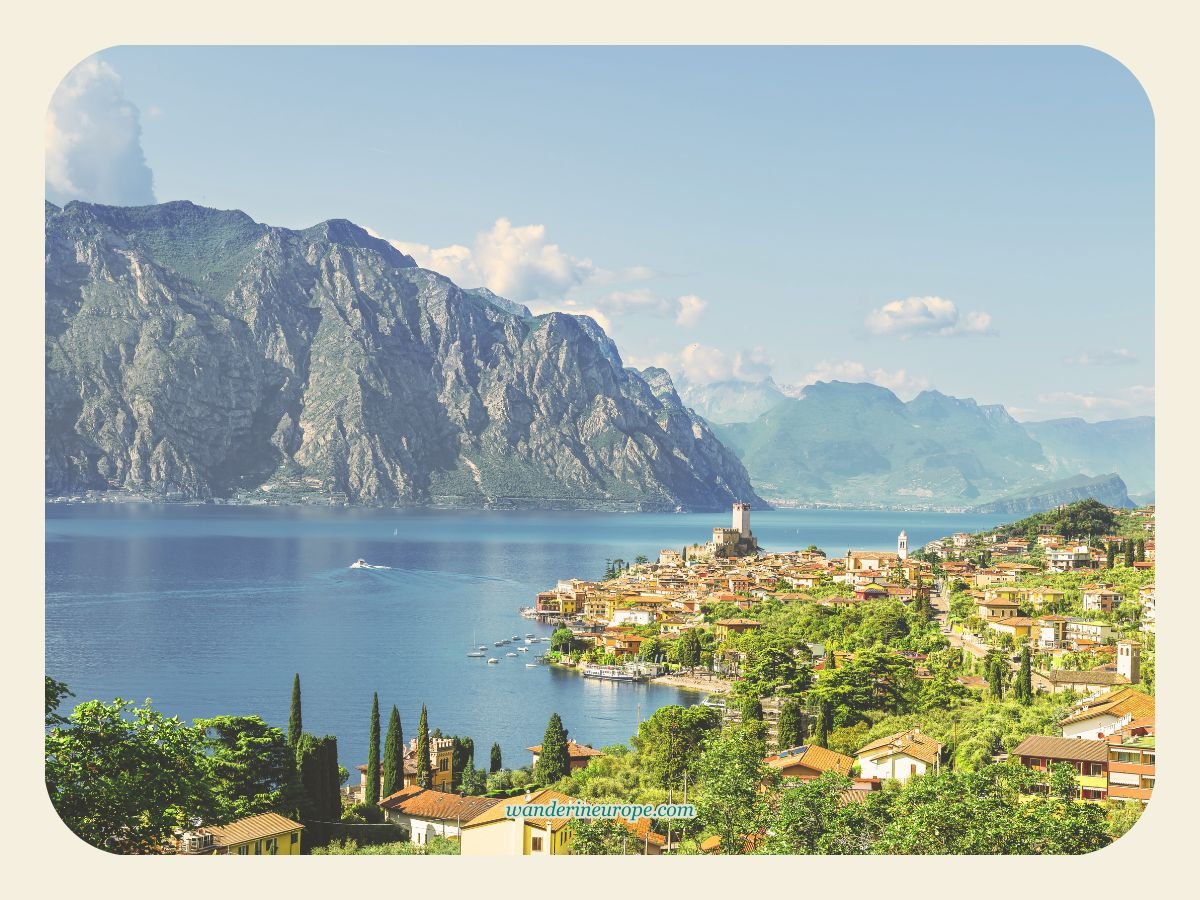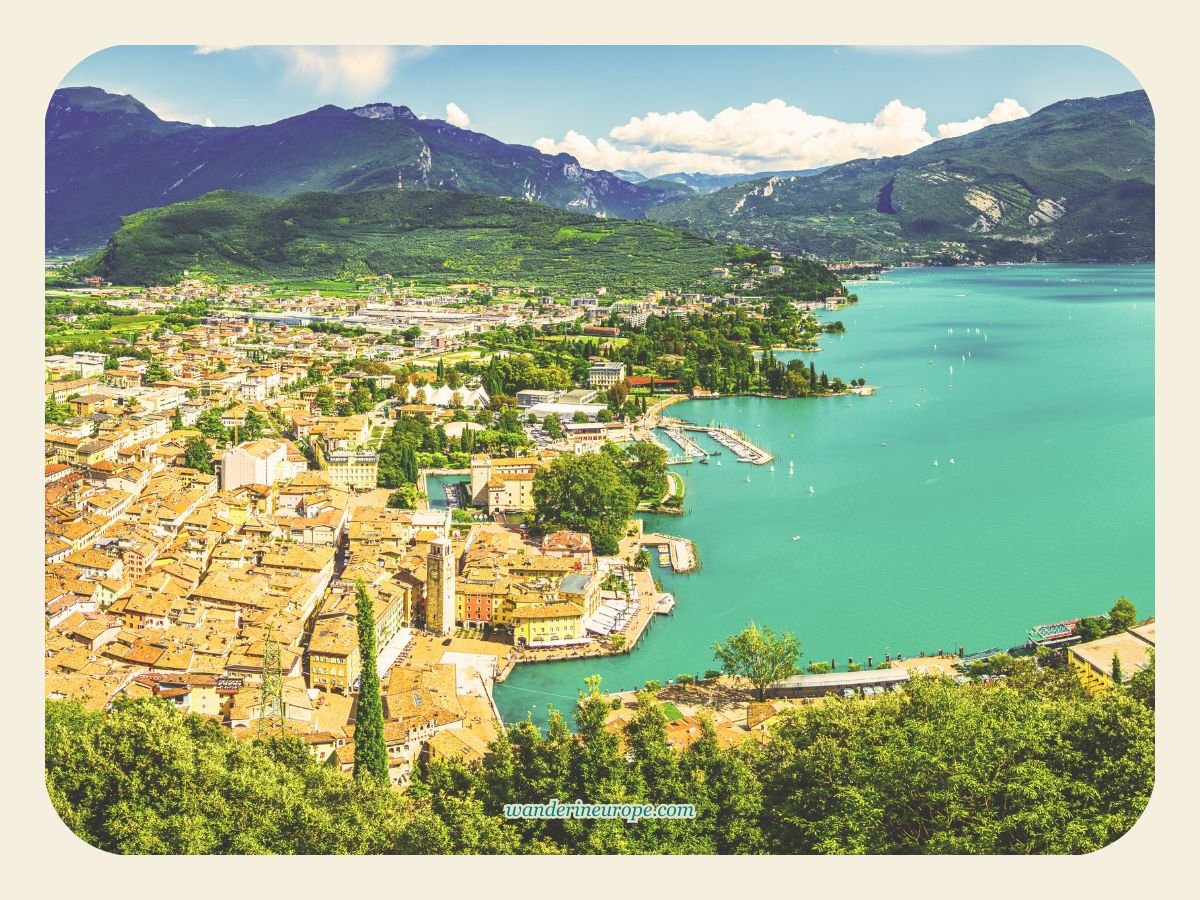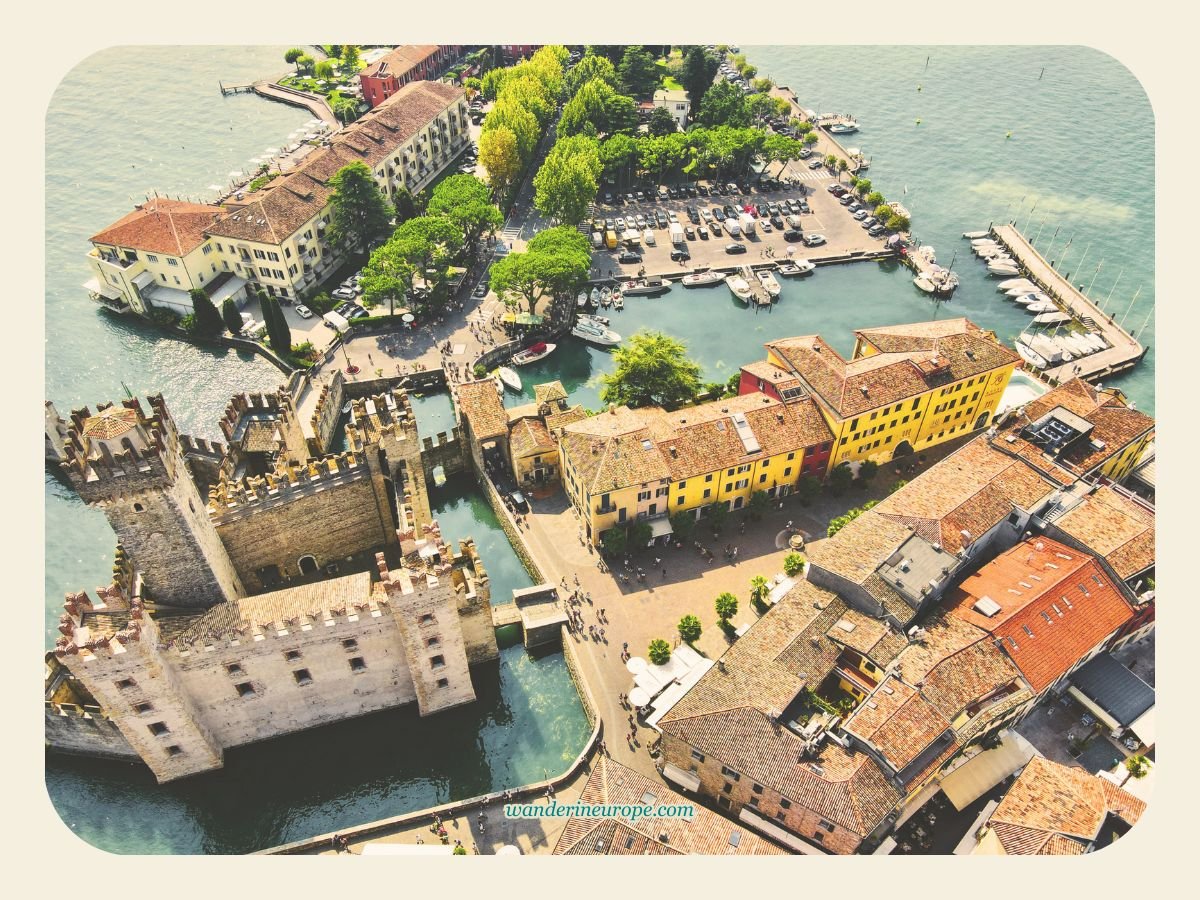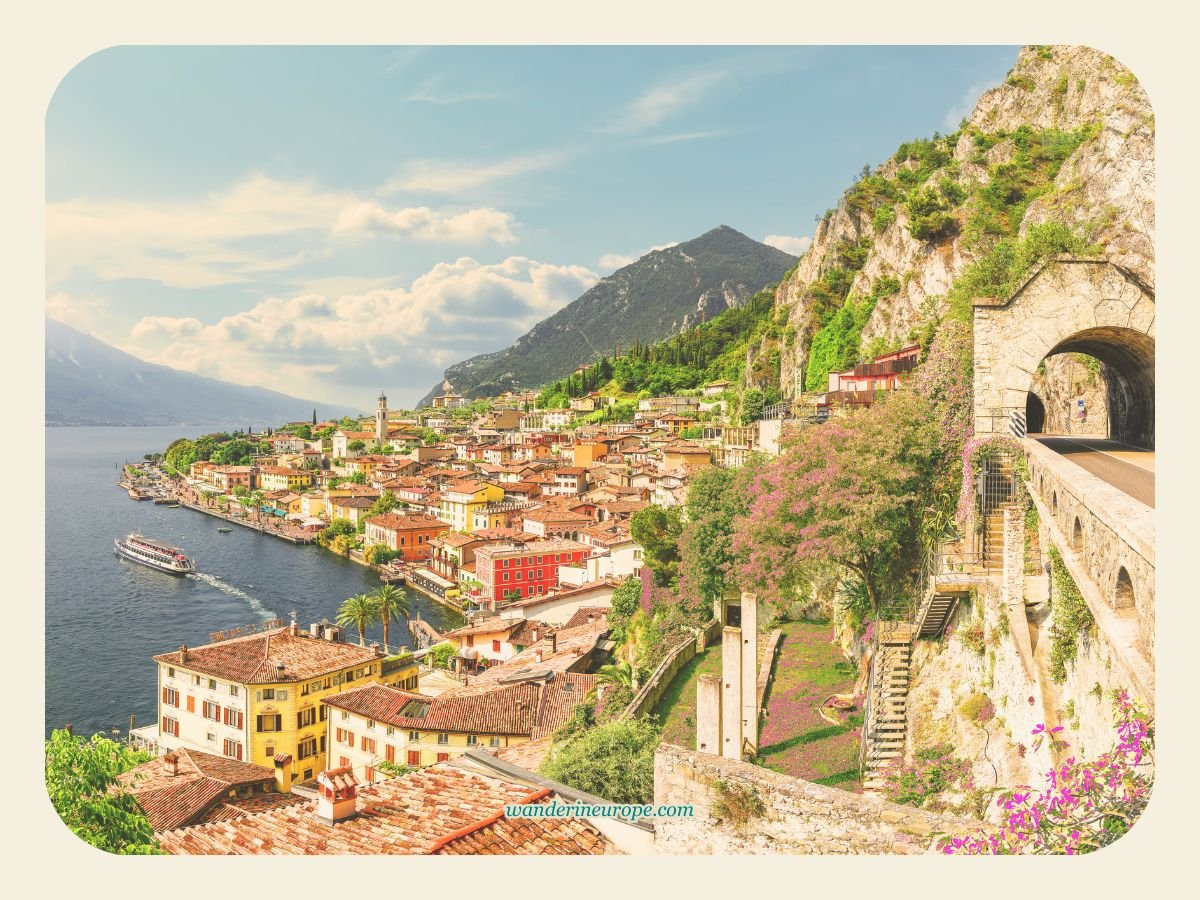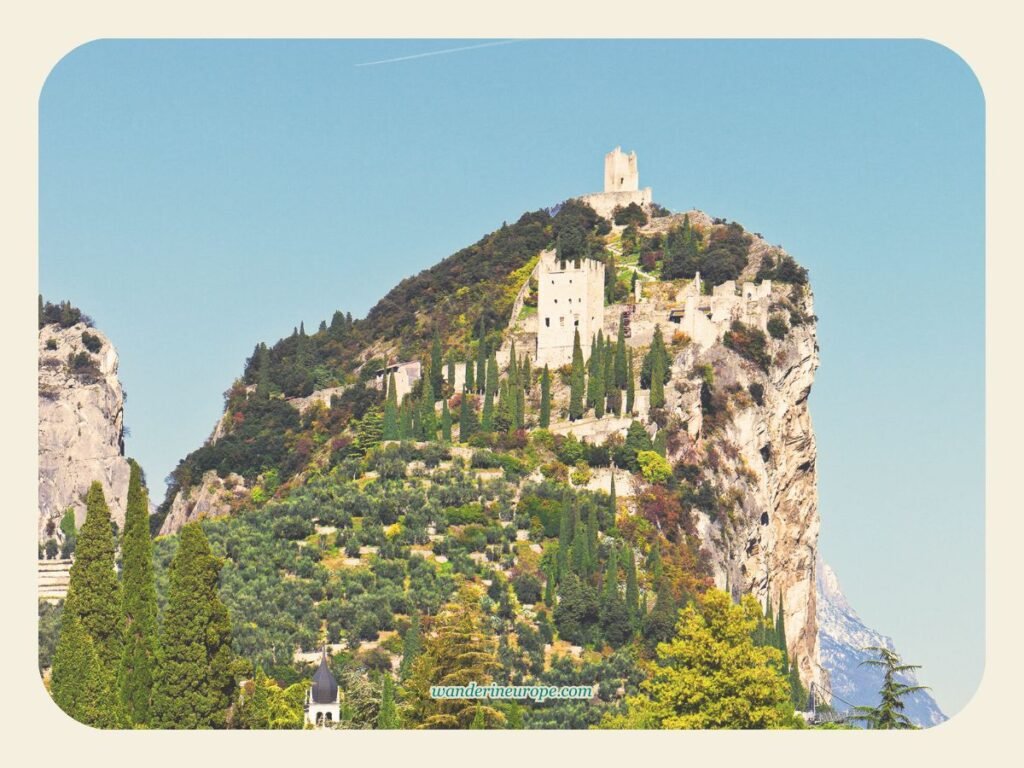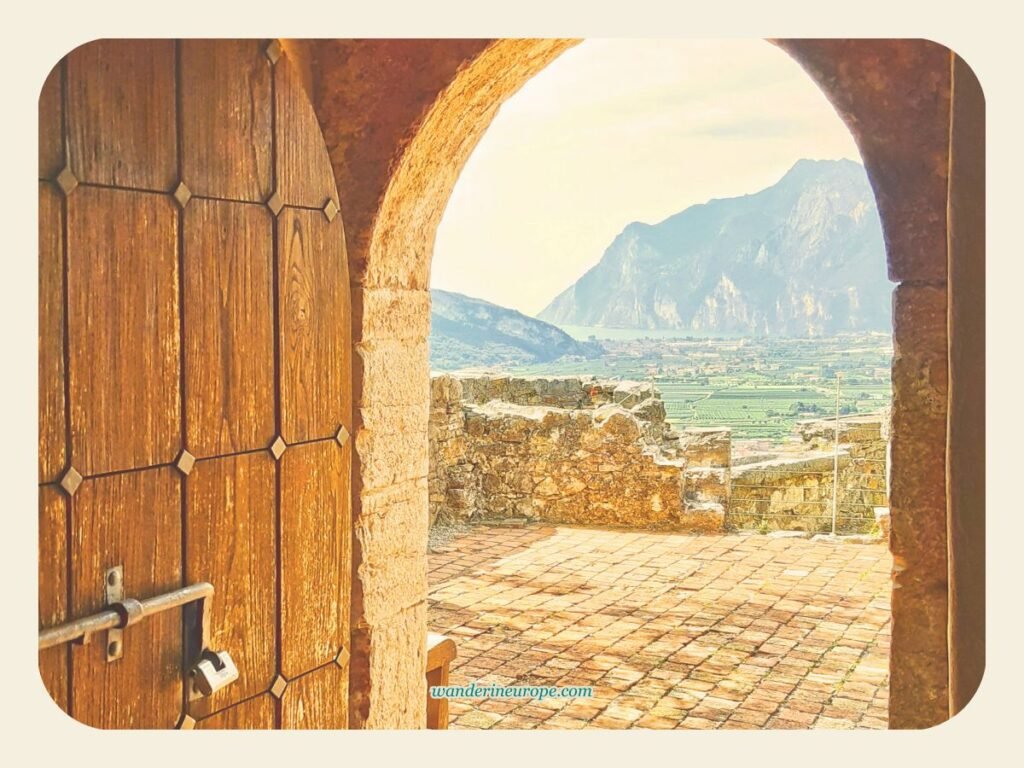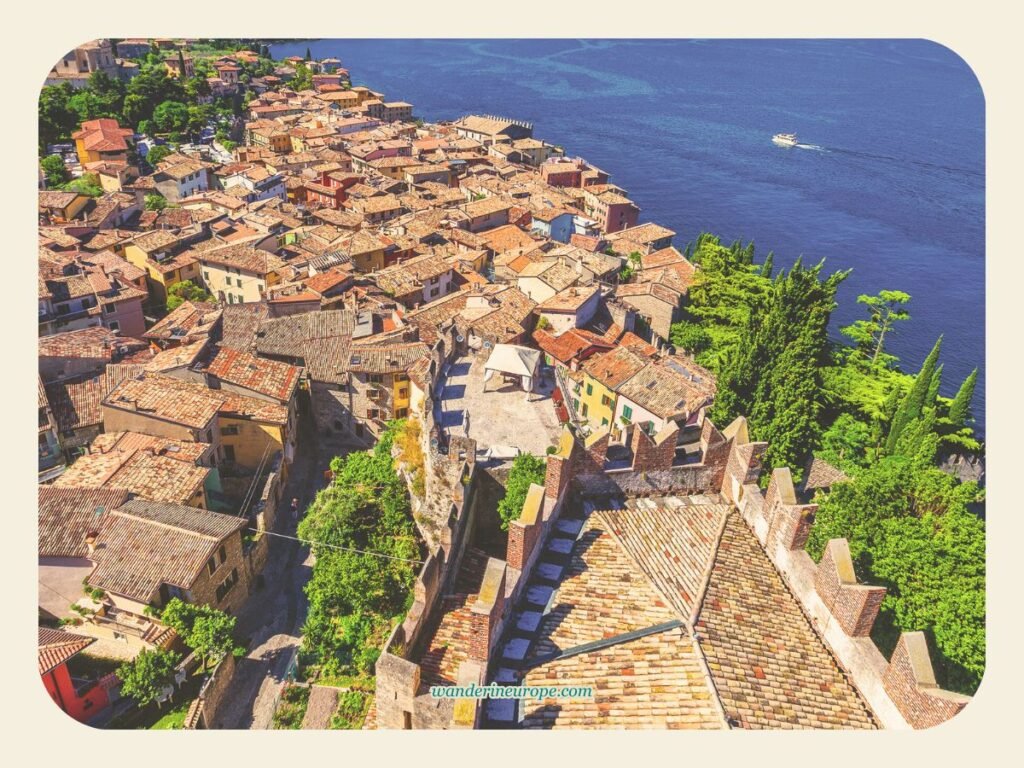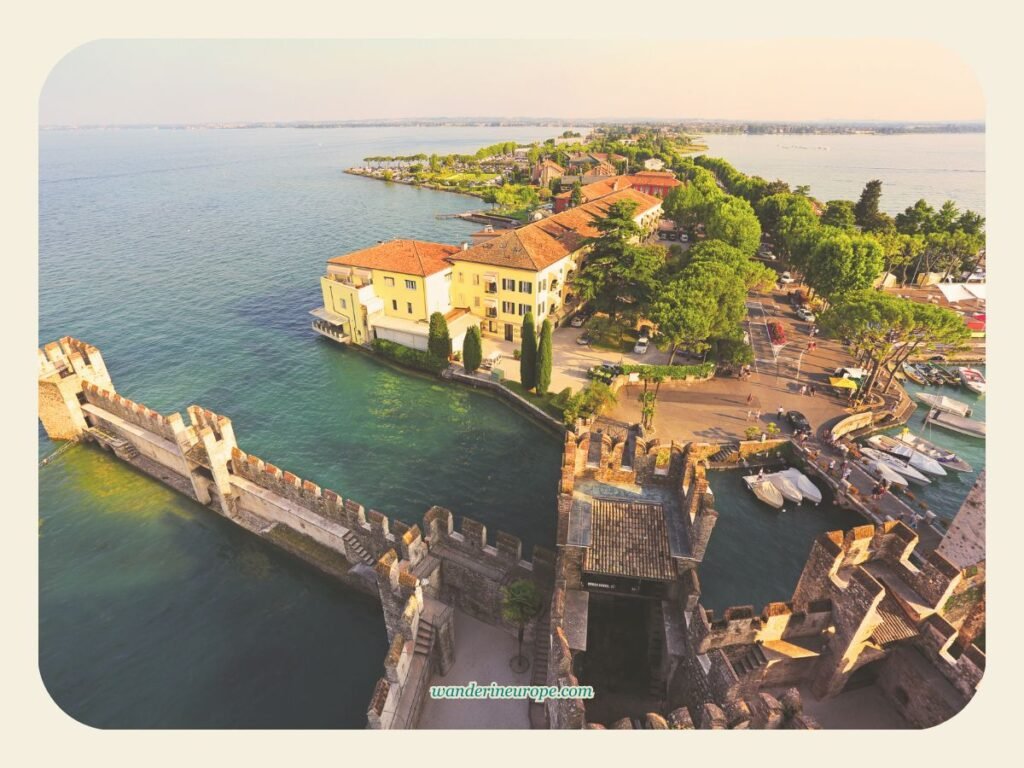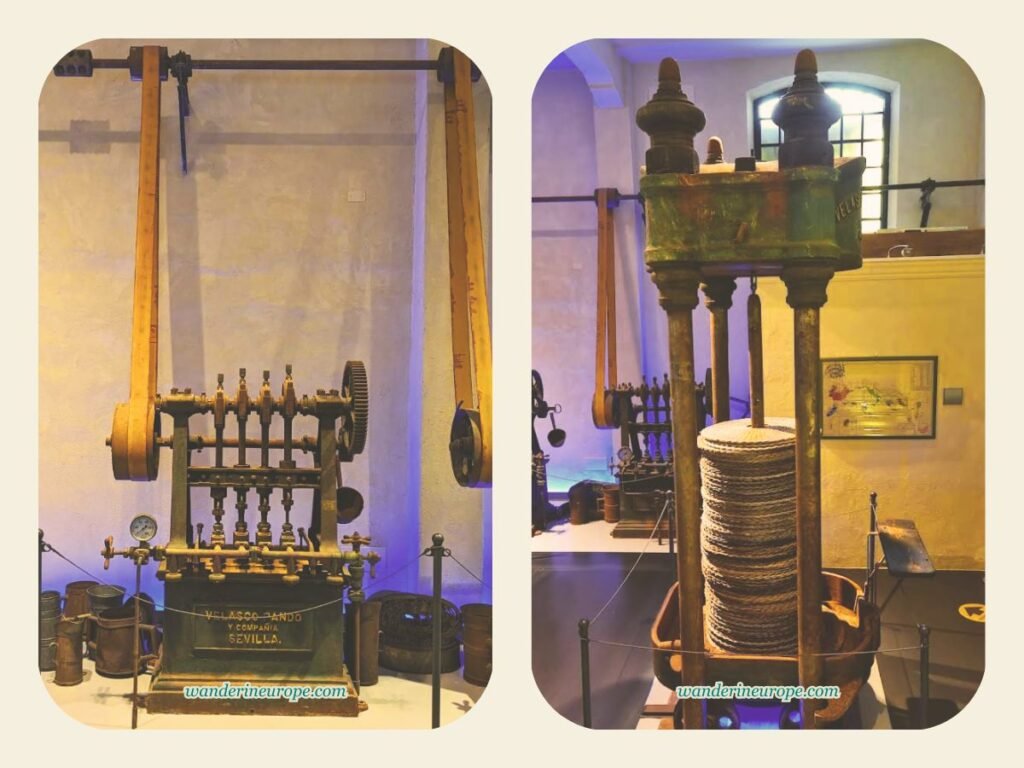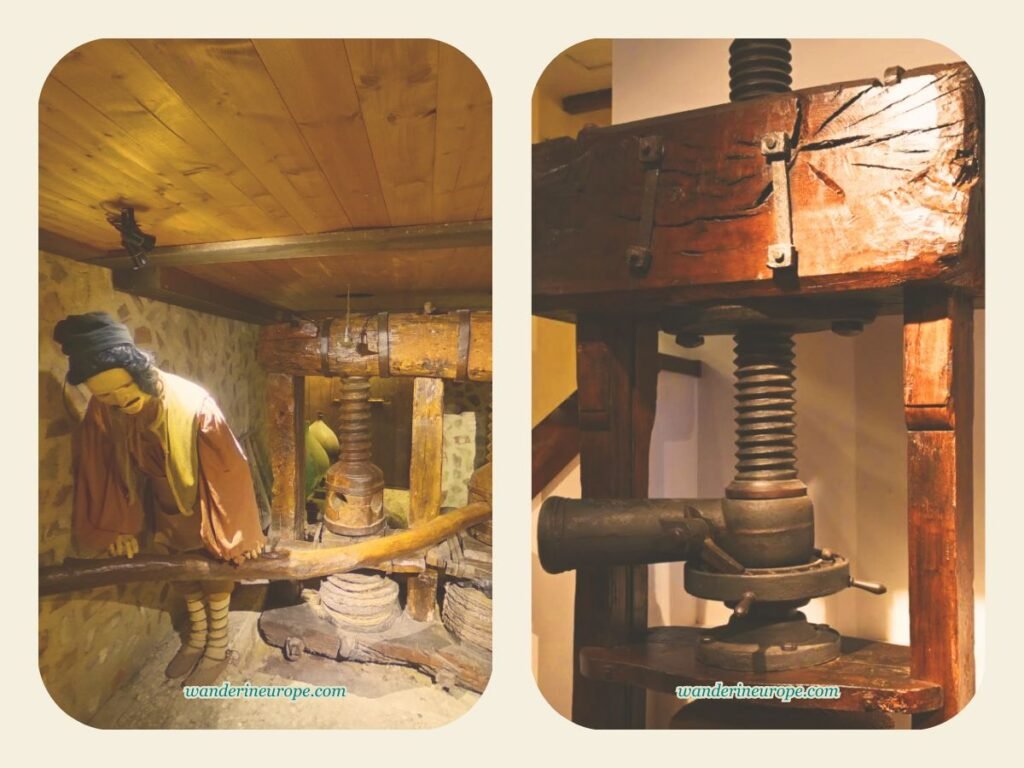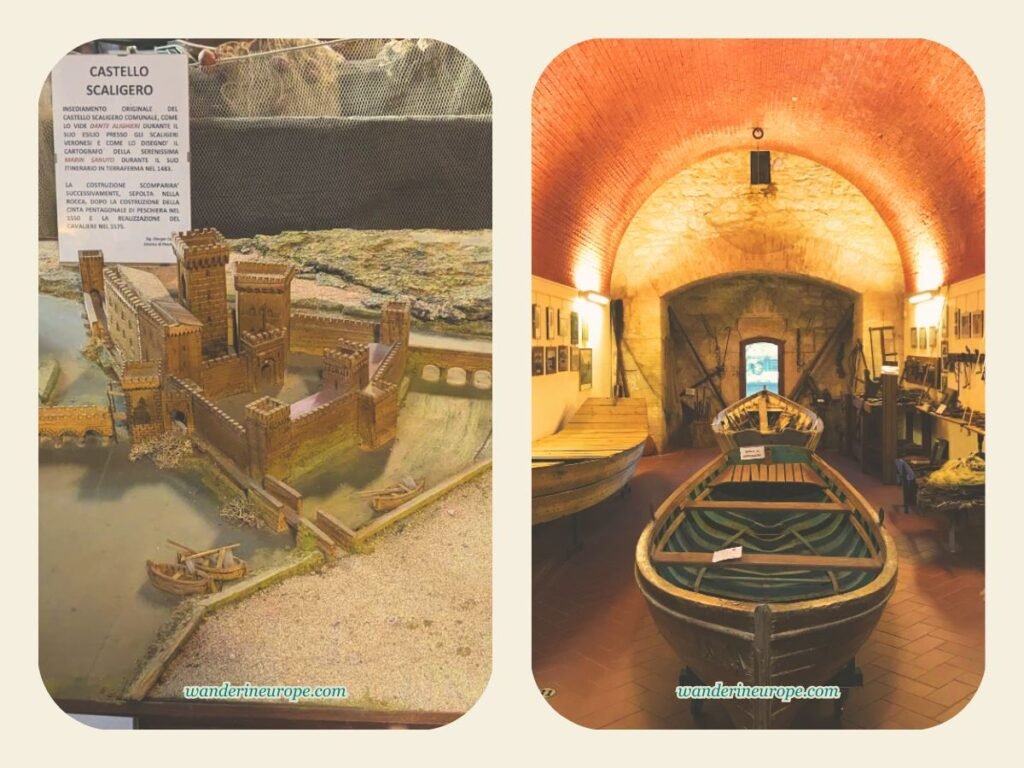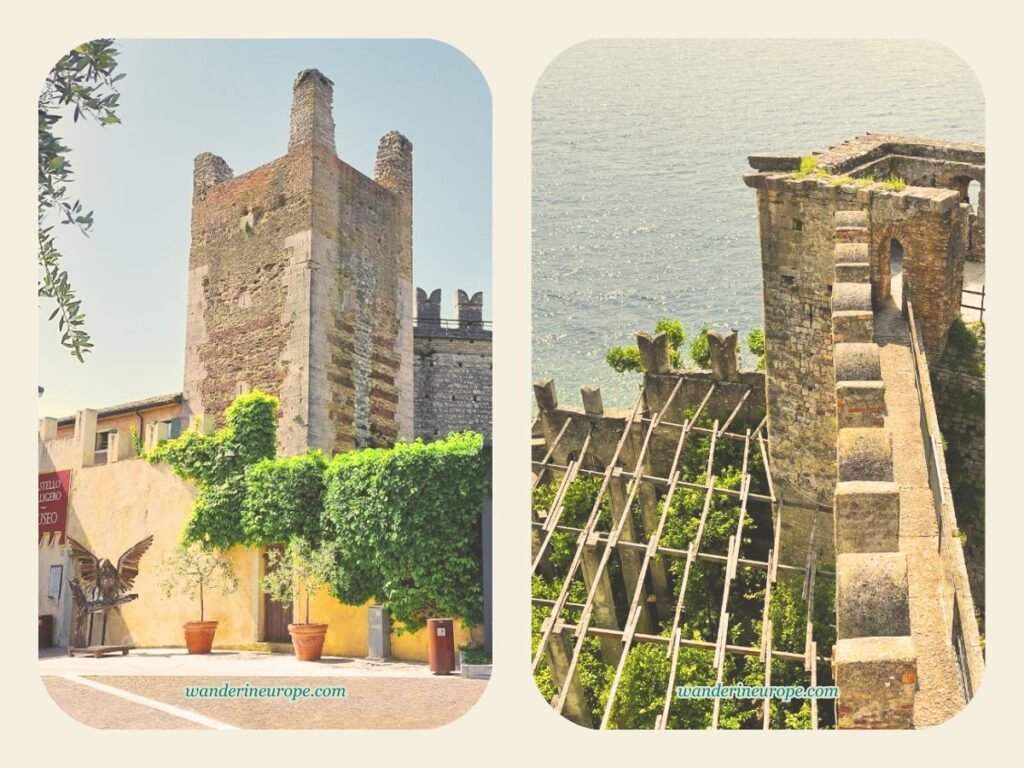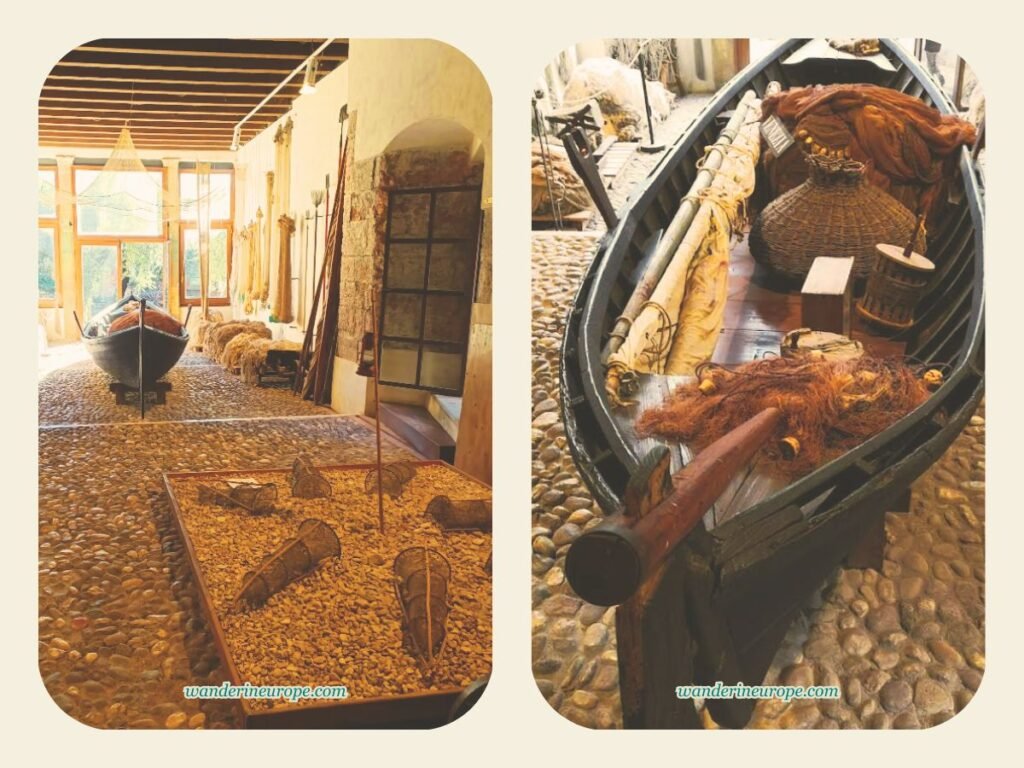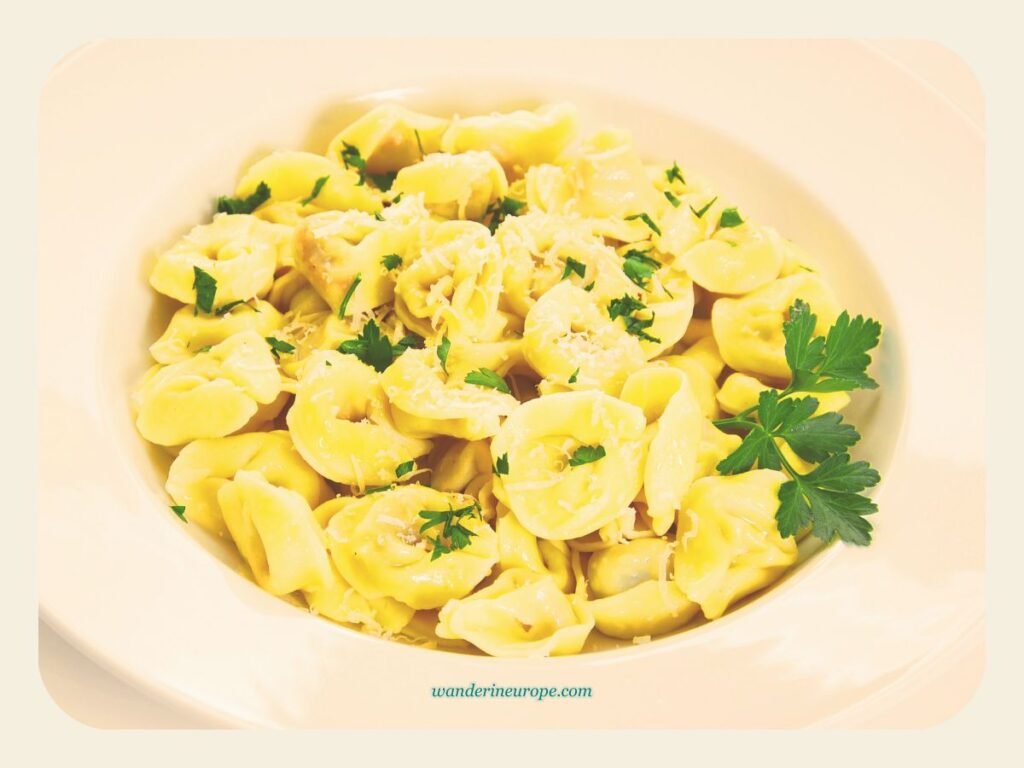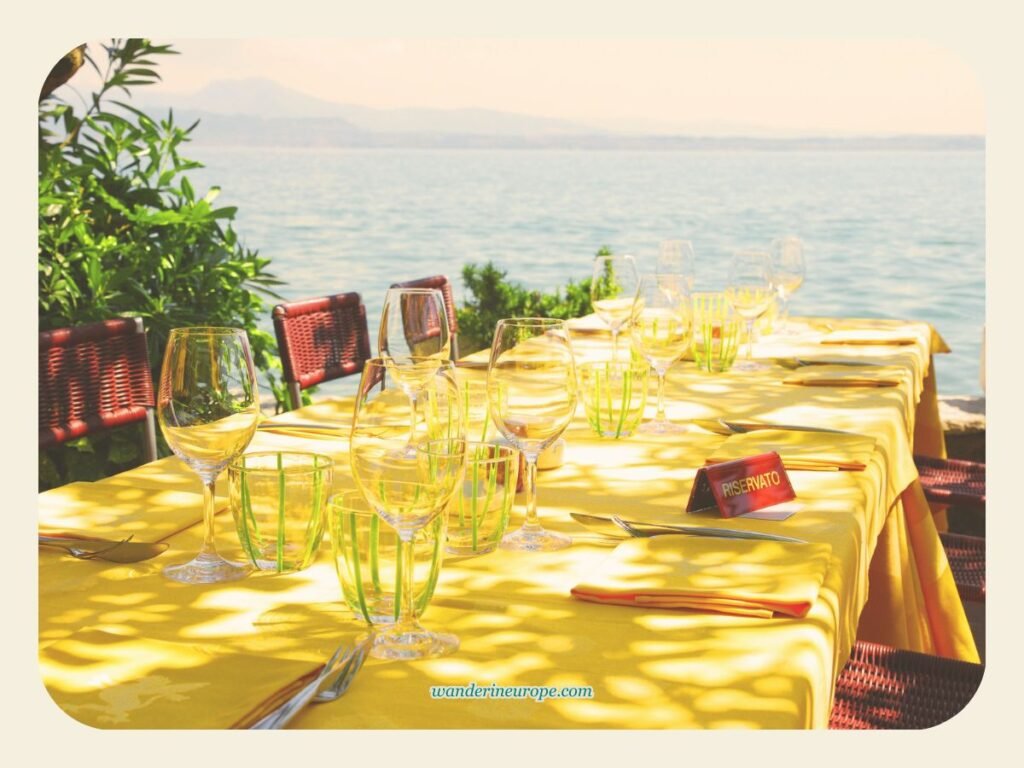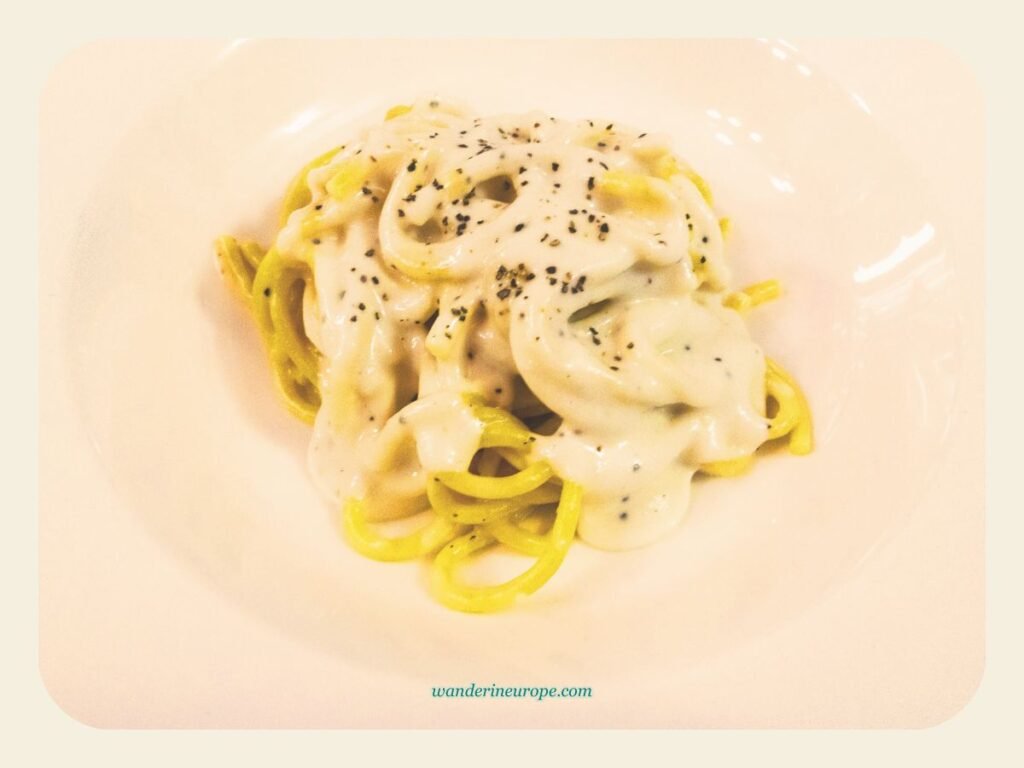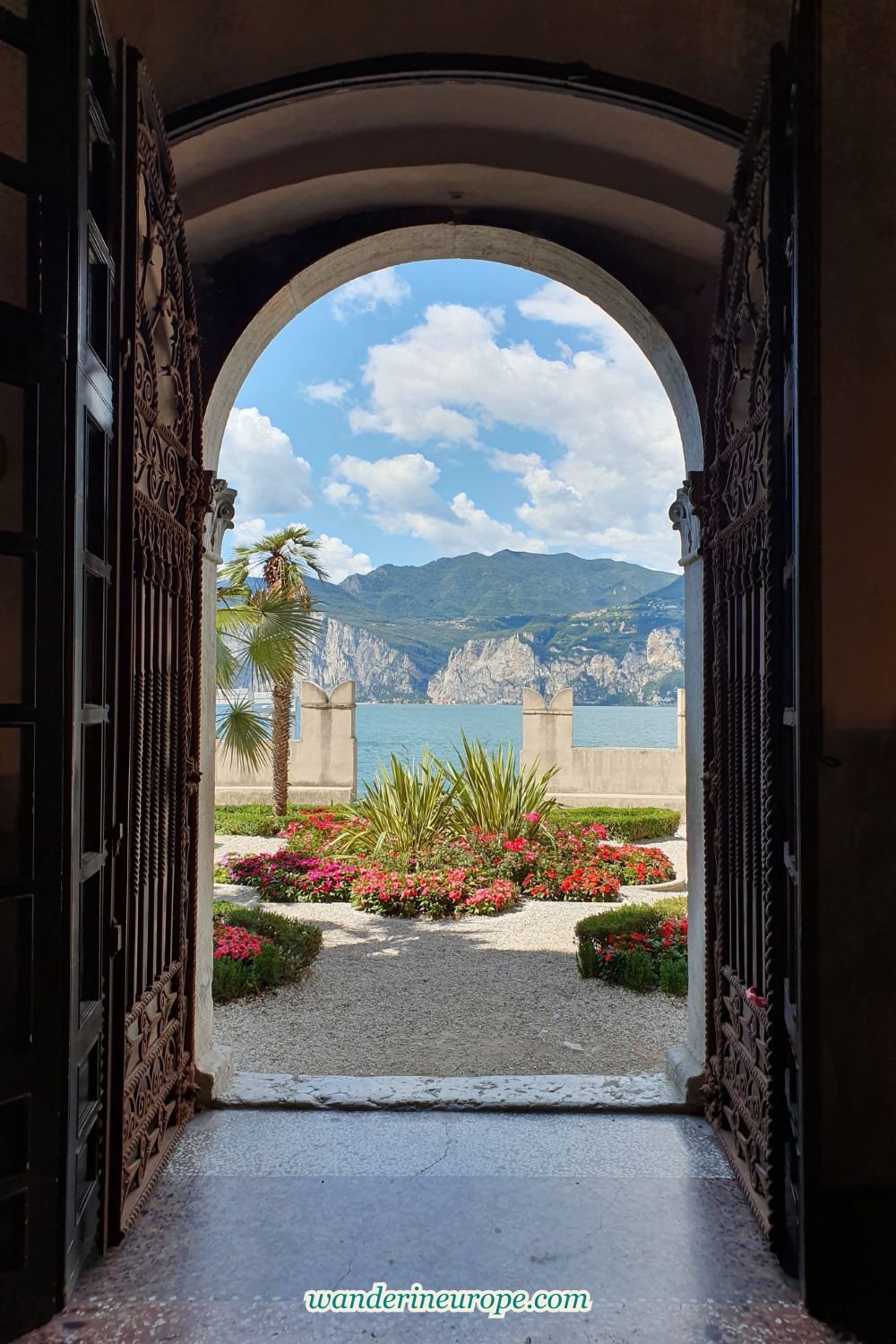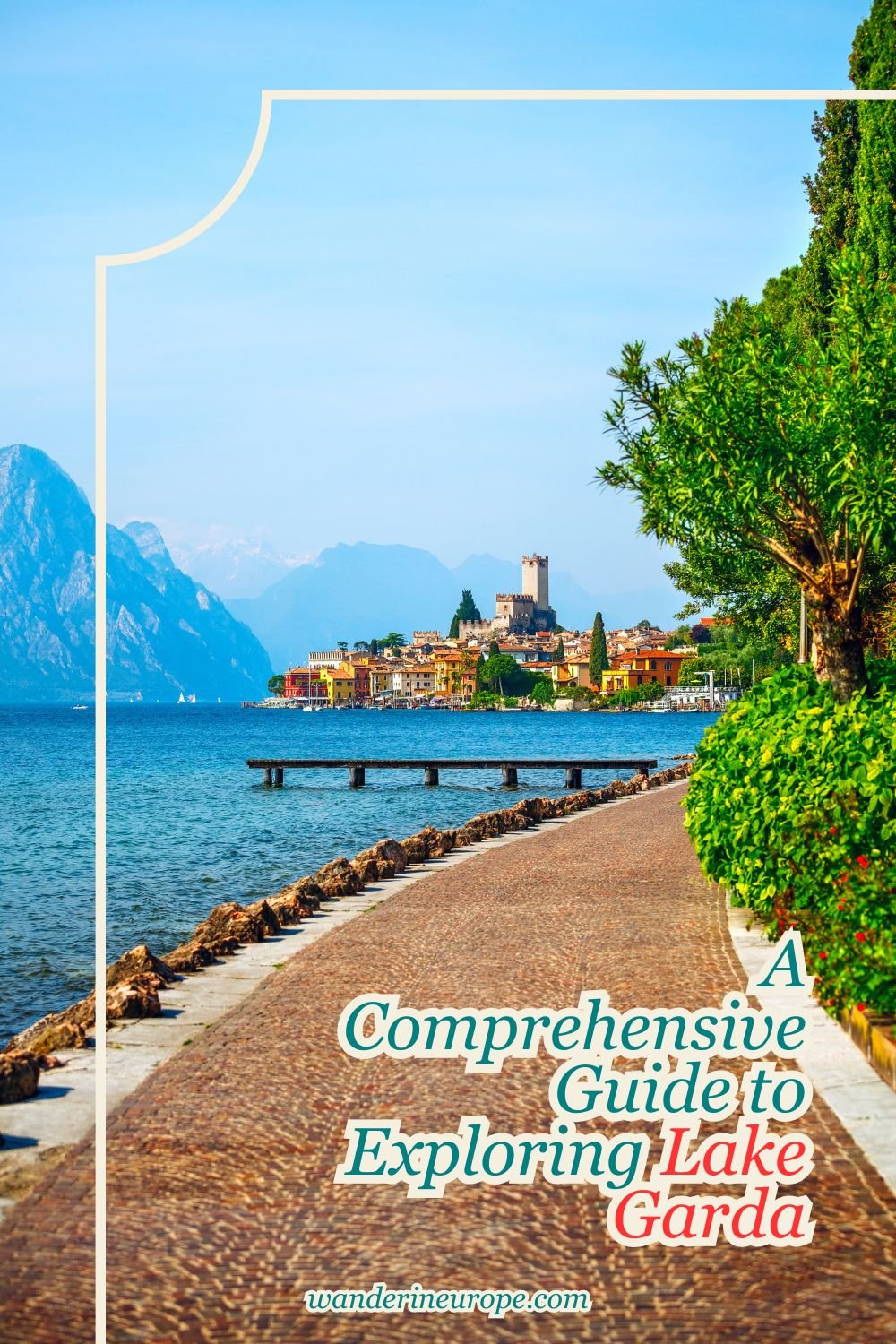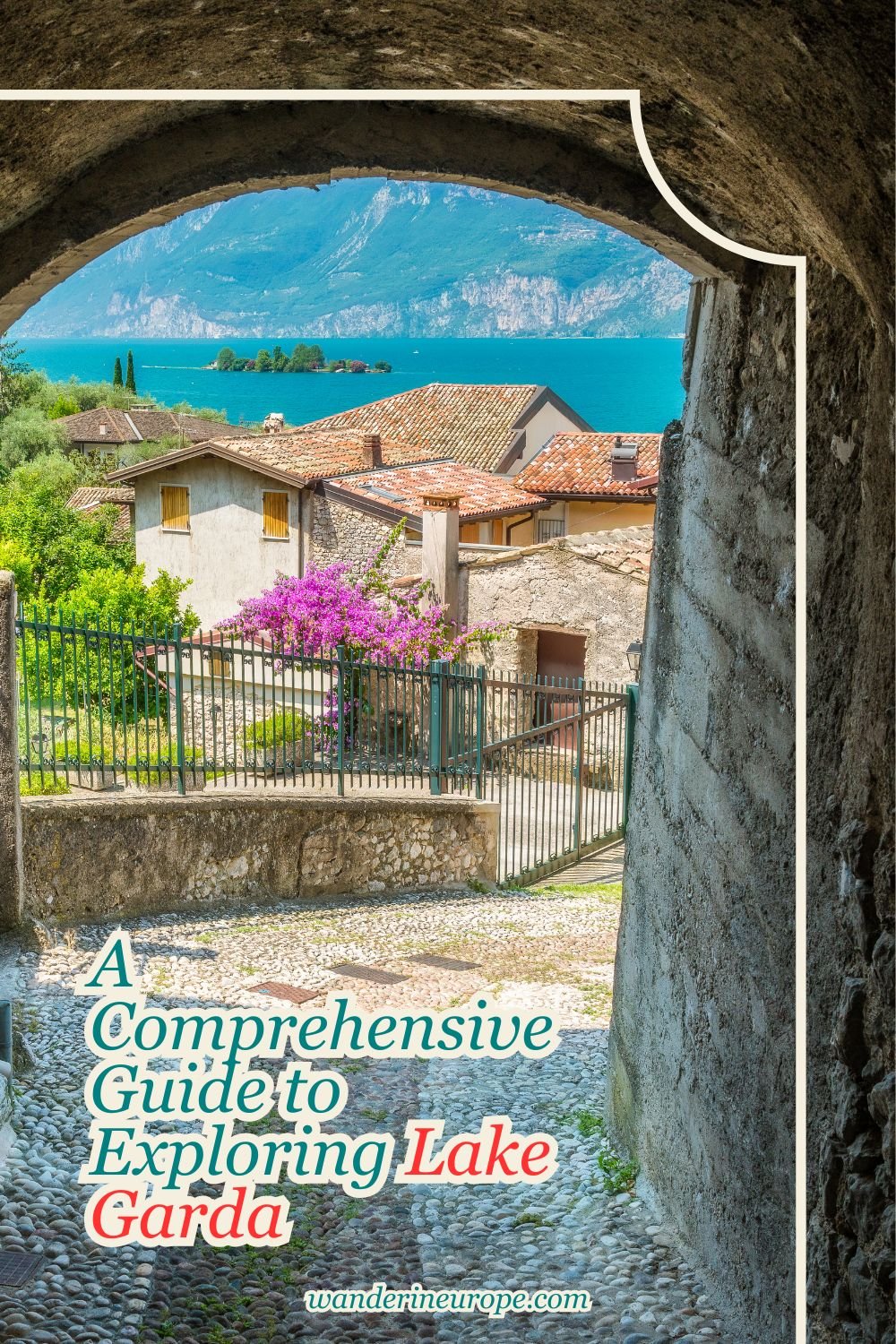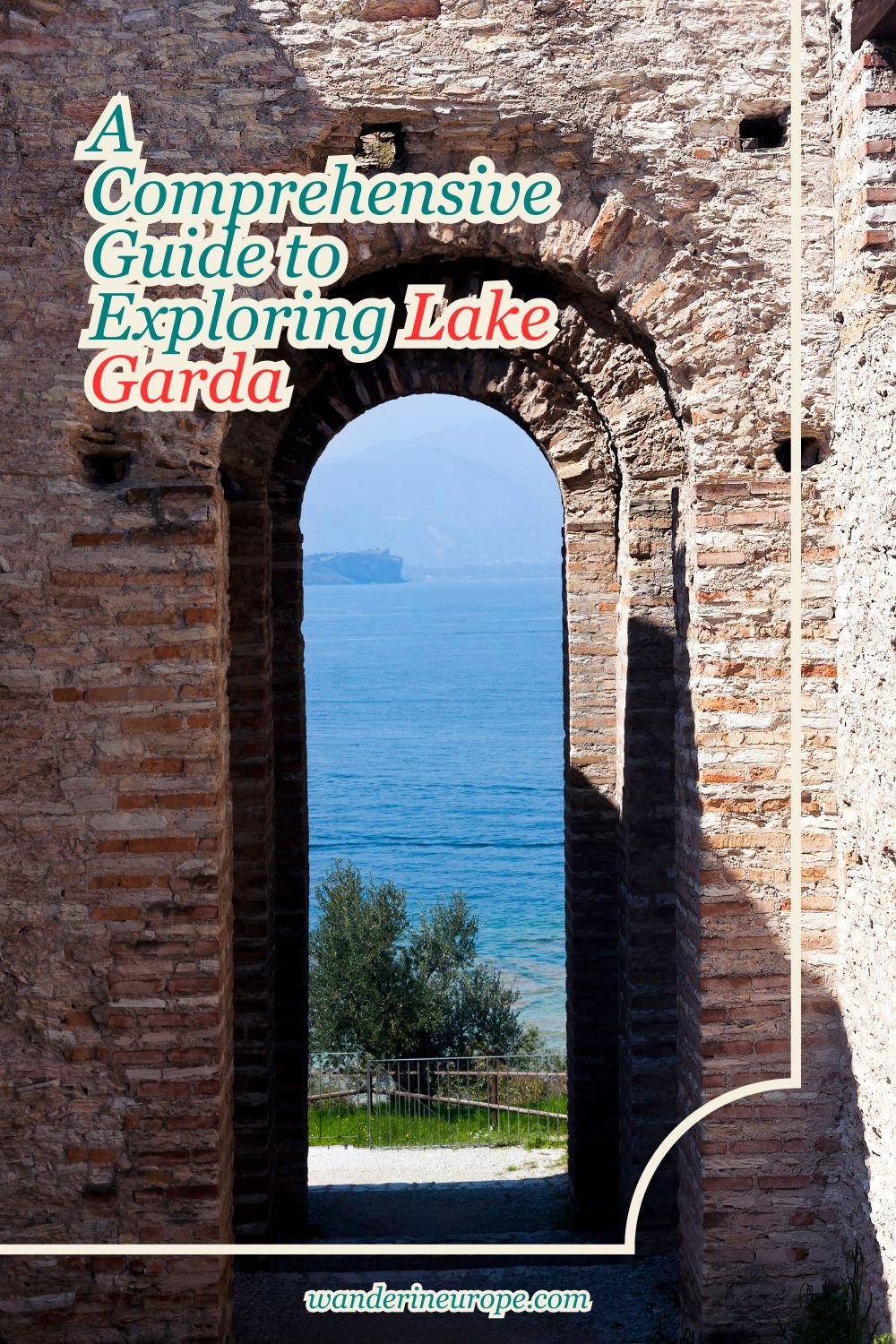A Comprehensive Guide to Exploring Lake Garda
WanderInEurope is reader-supported. Affiliate links and ads help us keep creating useful content for you.
Very few places in the world offer everything wanderers seek in a single, complete experience. In Italy, I believe Lake Garda is one of them.
Lake Garda is the largest lake in the country, and this alpine lake offers not only adventure and natural beauty but also countless cultural experiences that are exciting to explore. From picture-perfect old-world architecture to ancient historical sites, and local cuisine, there is so much to look forward to in this place. Let me share the amazing experiences I had in Lake Garda—ones you might enjoy if you ever visit.
Location
Lake Garda is one of the most beautiful places in Northern Italy. At the foothills of the Dolomites, it sits where three regions—Lombardy, Veneto, and Trentino-Alto Adige—meet.
Getting to its lakeside towns is easy: head to Desenzano del Garda from Milan, Peschiera del Garda from Venice, or Riva del Garda from Trento. It’s also a popular day trip from Verona, just a quick fifteen-minute train ride away.

The Charming Towns
What do I love most about Lake Garda? The beautiful towns and villages along its shores, like Sirmione, Malcesine, Limone, Riva, and Arco. There’s nothing like wandering along cobblestone paths, surrounded by charming buildings, with glimpses of the sparkling lake and towering mountains. But it’s not just about the views—that’s what makes it even more exciting!
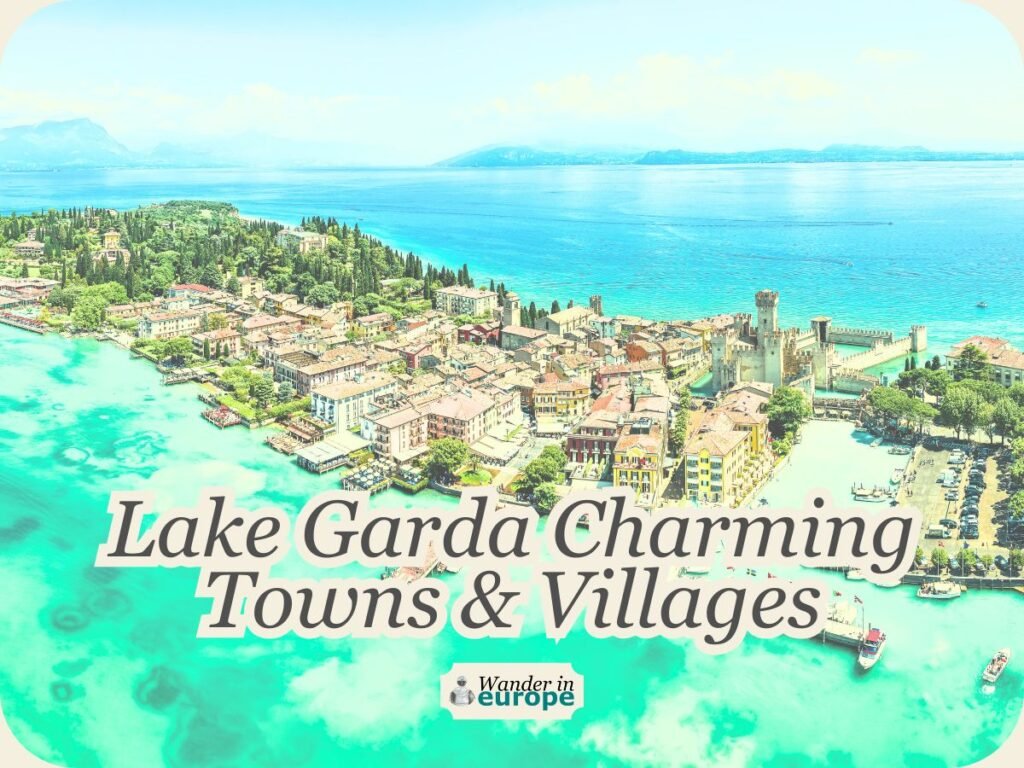

The Castles
Traveling to Lake Garda is a journey through history and romance, thanks to the castles along its shores.
Did you know there are about a dozen castles there? But if I had to pick the three most interesting ones, they would be the castles in Sirmione, Malcesine, and Arco. The castle in Sirmione has a one-of-a-kind design, the castle in Malcesine looks like something from a postcard, and the castle in Arco offers incredible views.
You should definitely visit at least one of them when you visit Lake Garda. Learn more:

From great hotel deals to skip-the-line tickets and affordable eSim to cheap rentals, click here for the best hotel deals and more travel discounts.
Archaeological Sites
Lake Garda has several archaeological sites, each in a different state of preservation. Some ruins are still recognizable, while others have worn away over time. A few were uncovered only in the last few decades, revealing more about the area’s past. The most remarkable sites include ancient Roman villas, prehistoric settlements, and medieval fortifications.
In some places, you can still see mosaics, frescoes, or remnants of old architecture, while other sites have little left beyond their foundations. Even so, these ruins offer a fascinating look into the area’s history, from its earliest inhabitants to the days of the Roman Empire and beyond.
Lake Garda has more than a dozen archaeological sites, but if you’re looking for some interesting ones to explore, these three are worth checking out: Grotte di Catullo, Villa Romana di Desenzano del Garda, and Rocca di Manerba.
Grotte di Catullo
Grotte di Catullo is a Roman villa ruin located at the tip of the Sirmione peninsula on Lake Garda. Dating back to the 1st century AD, it was once a grand residence with panoramic views of the lake. Visitors can explore the remains of ancient walls, arches, and mosaics that hint at the villa’s former luxury. The site also features an archaeological museum displaying artifacts found in the area. Surrounded by olive trees and offering breathtaking scenery, it provides a fascinating glimpse into Roman history in a spectacular setting.
For more info: Official website
Villa Romana di Desenzano del Garda
Villa Romana di Desenzano del Garda is an ancient Roman villa in the heart of Desenzano, just a short walk from Lake Garda. Dating back to the 1st century AD, it was once a luxurious residence, with beautifully preserved floor mosaics that still showcase intricate patterns and vibrant colors. Walking through the remains of its rooms and courtyards offers a glimpse into the scale and elegance of the villa in its prime. Like the first archaeological site I mentioned, this villa also has a small museum on-site that displays artifacts found during excavations, offering more insight into daily life in Roman times.
For more info: Official website
Rocca di Manerba
Rocca di Manerba is a historic site perched on a hill overlooking Lake Garda, offering incredible panoramic views. The remains of a medieval fortress can still be seen, giving a sense of its past strategic importance. Visitors can walk along the archaeological trails, where ruins from different periods reveal the site’s long history. A nearby museum displays artifacts uncovered in the area, helping to piece together the story of the people who once lived here.
For more info: bresciatourism.it
Museums
Besides the museums in castles and archaeological sites, there are a few more worth visiting if you want to explore beyond the beautiful scenery of Lake Garda. Keep these museums in mind—they’re a great option when the weather isn’t on your side and can turn a gloomy day around!



Beach & Water Activities
We’ve already seen how Lake Garda’s museums can turn a gloomy day around, but when the sun is shining, the lake truly comes to life. If the weather is on your side, make the most of it by heading to the beaches and enjoying everything the lake has to offer. Stretch out on the sand, have a picnic with friends, take a refreshing swim, or capture the perfect Instagram shot—Lake Garda is the place to be.
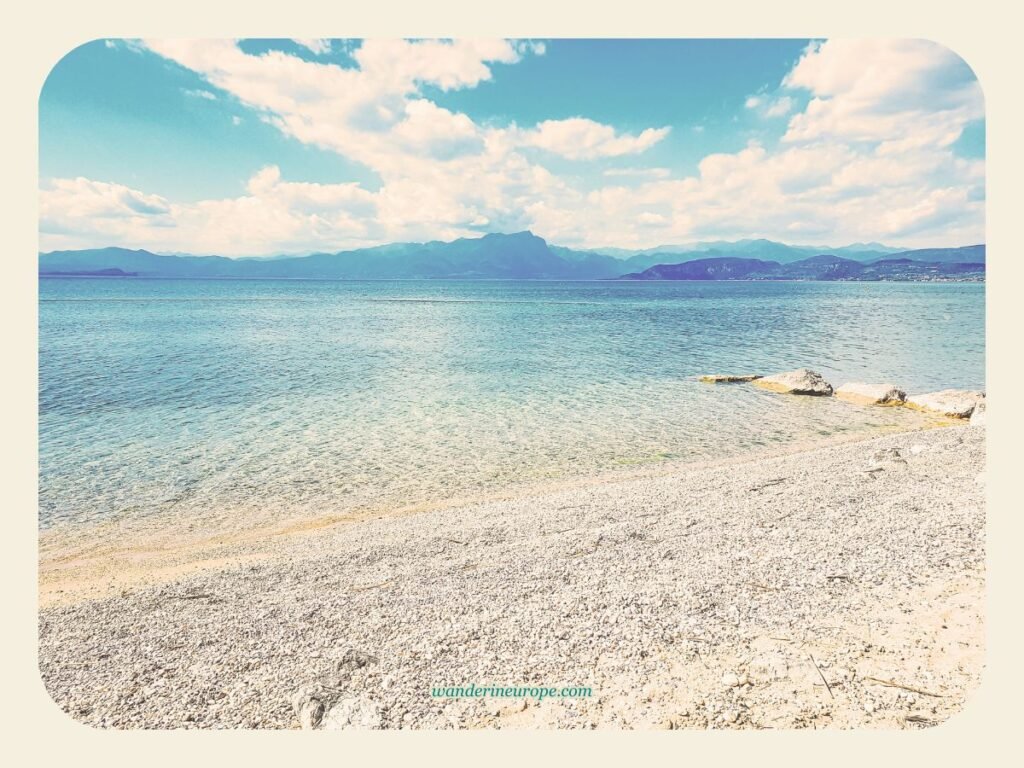
Scenic Trails
The rugged mountains in the northern part of Lake Garda set the stage for heart-pounding adventures like hiking, mountain biking, climbing, canyoning, and paragliding. If you’re up for a thrill, these experiences will push your limits. But even if adrenaline isn’t your thing, you can still take in the incredible scenery with a relaxed hike along the lake.
Excited to explore Lake Garda’s hiking trails but unsure if they’re too challenging? Don’t worry—some of the most scenic routes are easier than you’d expect. Trails like Busatte-Tempesta, Ponale, and the Forts of Monte Brione offer incredible lake views without demanding advanced hiking skills. Plus, they’re all close to the towns in the northern part of the lake, making them perfect for a laid-back day in nature.
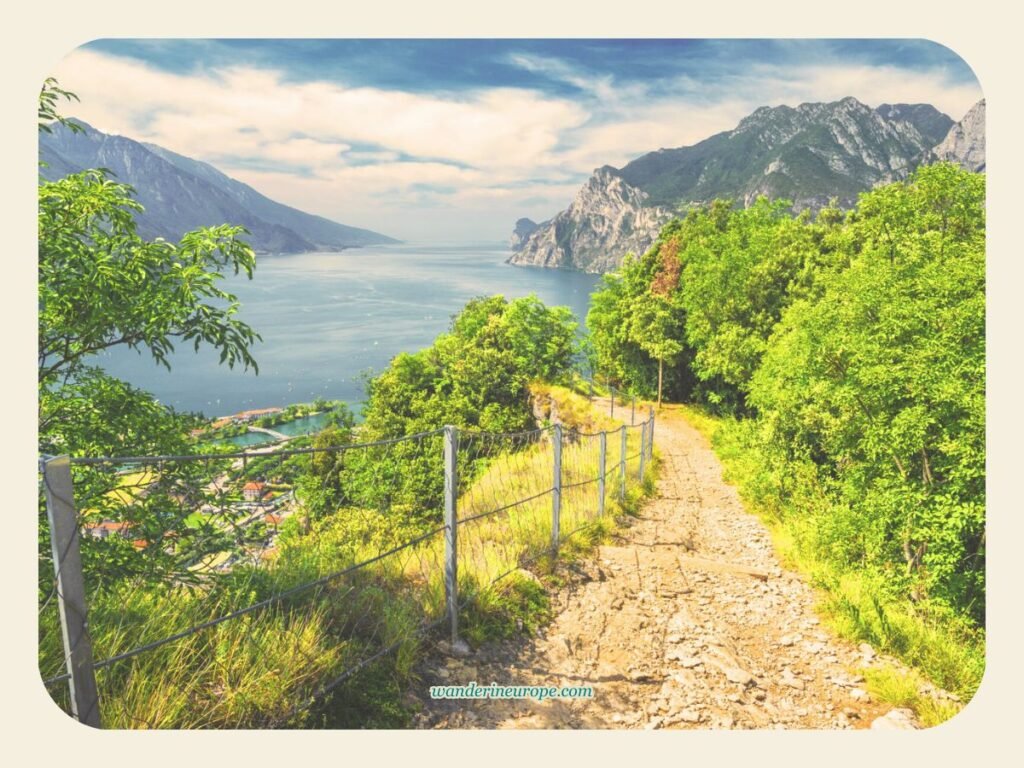
Monte Brione Trail
One hiking trail you won’t want to miss is the Monte Brione loop, a scenic route on a small mountain at the northern end of Lake Garda.
Starting from the harbor of San Nicolo in Riva, the trail follows the Peace Trail along the ridge, offering incredible panoramic views of the lake. Along the way, you’ll pass three notable sights: the Fort of Garda, the Fort of Batteria di Mezzo, and the Natural Reserve of Monte Brione.
The entire route is about 6.9 kilometers and takes around 3 to 4 hours to complete, depending on your pace.

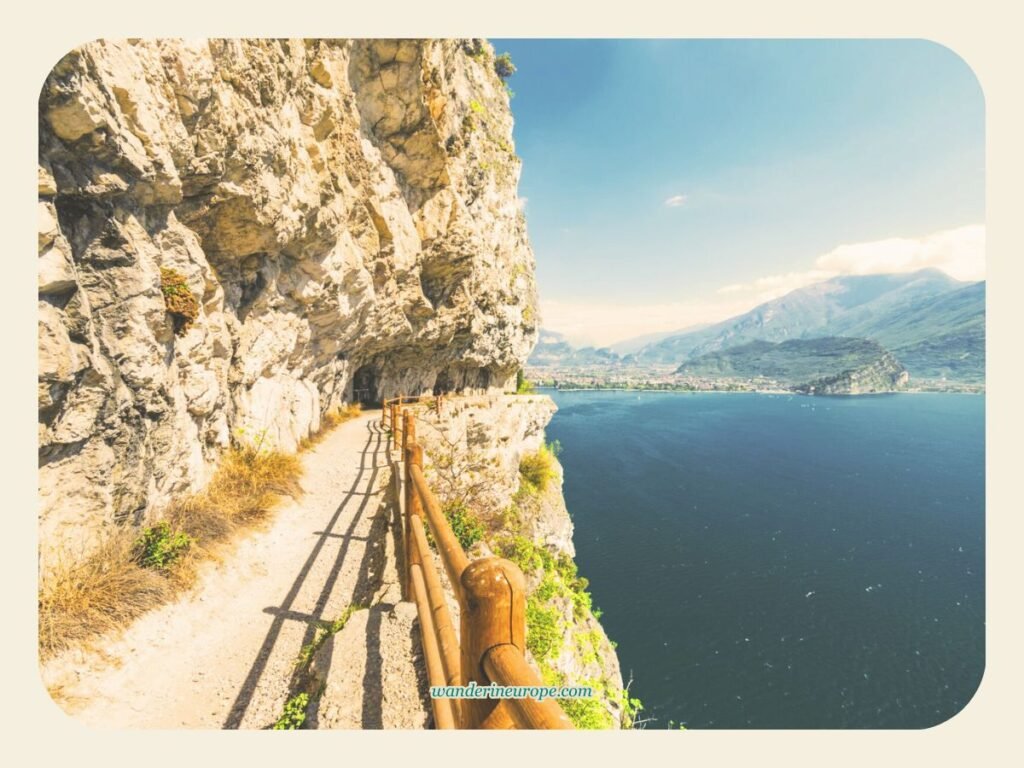
Ponale Trail
If you’re looking for a great hike from Riva, the Ponale Trail is a top choice in Garda Trentino.
Carved into the rugged mountain wall, it offers sweeping views of the lake’s northwest shores as you make your way to Pregasina, a small village with a breathtaking panorama of Riva and the eastern Italian Alps. History buffs will also appreciate the trail’s past—once fortified by Austrian forces during World War I, it still features remnants of military installations along the way.
The trail stretches 6.2 kilometers and takes around 3 to 5 hours to complete, similar to Monte Brione.

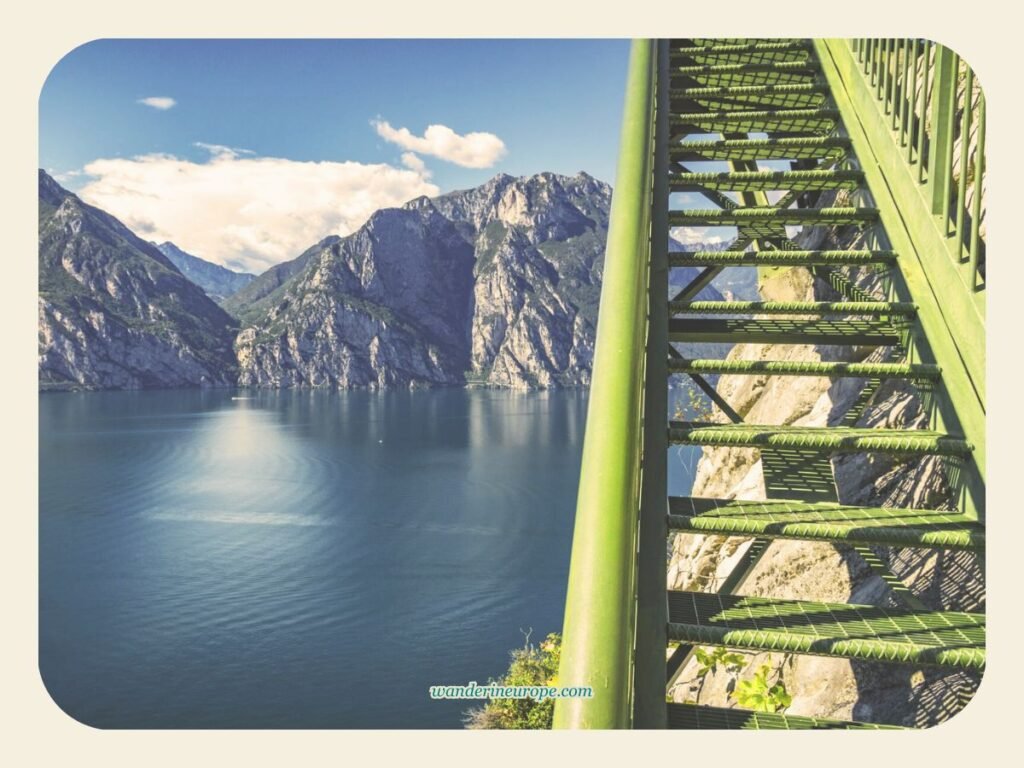
Busatte – Tempesta Trail
For a hike on the other side of Lake Garda, the Busatte-Tempesta Trail is a one-of-a-kind route that winds along the steep mountainside, offering incredible lake views.
One of its highlights is a series of iron ladders suspended over the water, including a 400-step section that adds a bit of challenge—especially for beginners—but also makes for an exciting experience. The trail spans 8.1 kilometers, starting from Busatte Park in Torbole, just next to Riva, and ending in Tempesta.
It takes about 3.5 to 4.5 hours to complete, so be sure to check the trail details, requirements, and any updates before setting out.

You can learn more about these hikes from the website of Garda Trentino.
Local Dishes


Bonus: Theme Park
If you’re visiting Lake Garda with kids, Gardaland Resort is a theme park you won’t want to miss.
Ranked among the world’s top 10 amusement parks by Forbes in 2005, it has only grown bigger since then and is now the 8th most visited theme park in Europe. Spanning 445,000 square meters, Gardaland is packed with thrilling rides, live shows, themed hotels, and even a Legoland water park.
The park features eight themed areas with dozens of attractions, including every kind of roller coaster you can imagine—suspended looping, steel sit-down, wing, dive, and more. Whether you’re looking for high-speed adrenaline rushes or family-friendly fun, Gardaland has something for everyone.
Learn more: Gardaland official website.

Visit Lake Garda
Check out WanderInEurope’s 3-day Lake Garda itinerary for tips on making the most of your trip. It offers different ways to explore the lake in just a few days. And if it’s your first time in Lake Garda and you’re planning your own itinerary, my list of recommended things to do will help you get started.
Go Beyond Lake Garda
Lake Garda is just the beginning. Northern Italy is filled with incredible landscapes, historic landmarks, and architectural wonders waiting to be explored. Don’t miss the chance to experience it all—let WanderInEurope’s Northern Italy bucket list guide you to the region’s most unforgettable destinations.
For a convenient, unique, or more enriching visit, check out these experiences and services:


Pin this to save it for later or bookmark it to read anytime.


